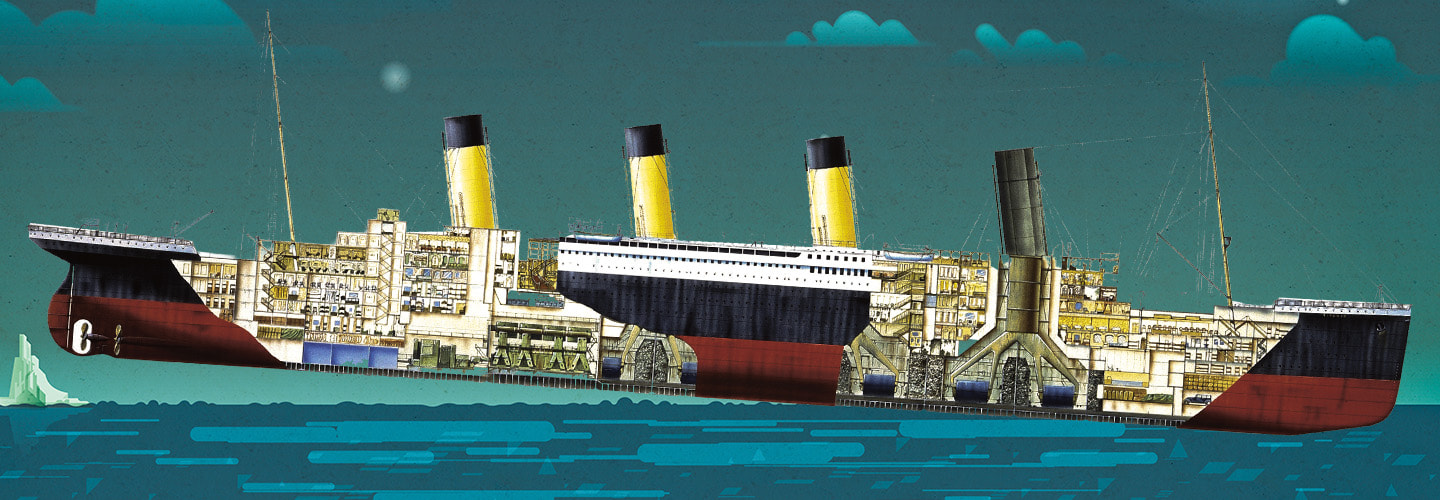Carl Simon/United Archives/Universal Images Group via Getty Images
Survivors of the shipwreck waited for rescue.
Construction on the Titanic began in 1909. For more than two years, thousands of men worked on the ship. It was dangerous work. Eight men died, and more than 200 were injured. In the end, the workers built the biggest, fanciest ship of its time.
The Titanic had the most advanced safety features at the time. It was thought to be unsinkable. Sadly, it was not. The ship hit an iceberg on April 14, 1912, during its first voyage. The huge chunk of ice scraped the side of the Titanic. The ship’s rivets popped out. Water rushed into the ship. Before long, it sank.
Look inside one of history’s most famous ships—before the disaster.

